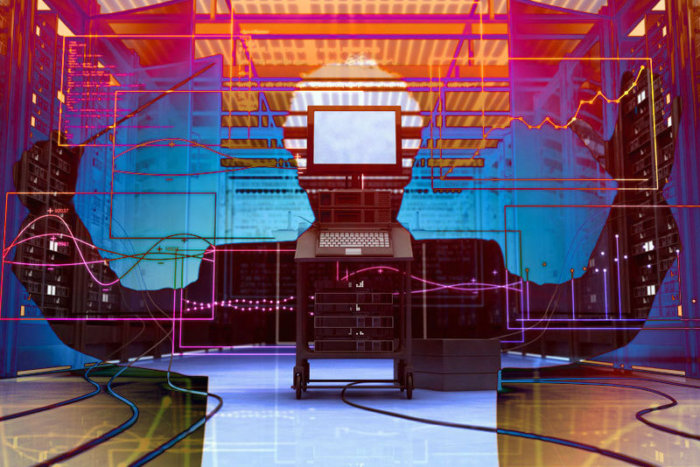How COVID-19 is shaping enterprise networking

The COVID-19 pandemic has influenced the networking arena in a number of ways, including the rise of fully automated remote offices, the need to support a “branch of one,” and the growth of new communications software tools.
“One of the biggest trends we are seeing is business agility. That is, IT looking at the tech they have deployed and evaluating it not just in terms of speeds and feeds, but how agile it is to handle whatever’s coming next,” said Todd Nightingale, Cisco’s Enterprise Networking & Cloud business chief. “Software APIs are a huge part of that trend, because it is amazingly easier to handle changes through APIs and software that make it possible to change things in a day rather than months.”
In Cisco’s case, Nightingale says it’s looking to increase support for technologies such as open-source programming tools Terraform and Ansible to make automation easier and more agile.
It’s also becoming more important that network professionals continue to amp-up software skills, such as using APIs and code repositories, to tap the full capabilities of today’s networks, said Susie Wee, senior vice president of Cisco’s DevNet Ecosystem Success group, in a recent blog post. It takes their networking skills plus software knowledge to securely connect business-critical applications together through the cloud, she stated.
Cisco has built API access into its latest networking hardware, and it created links into the business cloud services, such as Amazon AWS, Microsoft Office365, and Google Cloud, so Cisco can programmatically manage the interface between business networks and these clouds, Wee added.
Cloud and automation
Taking advantage of such cloud APIs will be a key driver for companies in the current and post-COVID networking environment.
The rapid pace of innovation in cloud infrastructure and platform services (CIPS) has made cloud the de facto platform for new digital services and existing traditional workloads alike; roughly 40% of all enterprise workloads will be deployed in CIPS by 2023, up from 20% in 2020, according to a recent Gartner report.
“The COVID-19 pandemic has resulted in a recalibration of cloud strategies, where collaboration, mobility and virtual desktops are rapidly moving to the cloud to enable a distributed and secure workforce,” stated John McArthur, senior director analyst with Gartner, in the report.
COVID has accelerated transition to the cloud not only as an application destination but also as an emerging enterprise management model, said Brandon Butler, senior research analyst, enterprise networks, at IDC, during the research firm’s “Future of Enterprise Networking: Emergence of the New Normal” webinar recently.
“Managing enterprise resources from the cloud provides network insights and analytics as well as fast access to new features going forward,” Butler said. “It has been an important function for managing network operations during the pandemic, and it will continue to be a trend post-pandemic.”
Along with increased use of advanced APIs and a move toward cloud management, analysts are seeing tremendous growth in the use of automation technology.
In 2020, enterprises used automation tools to enable user on-boarding, service activation and remote maintenance, for example, according to IDC.
More advanced automation tools can help companies detect and define devices connecting to a home office network and apply segmentation policies to control access permissions and prevent infections from spreading from home offices and to corporate resources, Cisco said.
“The idea of fully automated remote operations becomes incredibly important with the advent of IoT equipment such as sensors and cameras,” Nightingale said. “Automation is an evolution that COVID accelerated, and [automation] will ultimately help IT groups extend their capabilities now and in the future.”
A branch of one
Remote offices and branches will continue to be the focus of many IT teams, experts say. IDC says that post-COVID, more than 52% of workers will either remain remote or have an in-office/remote hybrid arrangement. That trend will push many enterprises to support what IDC calls a “branch of one.”
“Enterprises have to support a hybrid workforce and consider how LAN policies can extend to remote workers using branch-of-one architectures,” said Brad Casemore, research vice president with IDC’s data center and multicloud networks group.
Casemore said new IDC research finds that critical components of branch-of-one architecture should include support for technologies such as a cloud-based platform for centrally managing enterprise network policies, visibility and analytics tools for monitoring application performance and user experience, centralized security, and subsidized broadband or wireless backup capability.
COVID drove a shift to a hybrid workforce that won’t be going away, Nightingale said. The drive now is to bring the best experience, premium connectivity and security possible in a tightly integrated package, no matter where the user is coming from, Nightingale said.
READ MORE HERE



